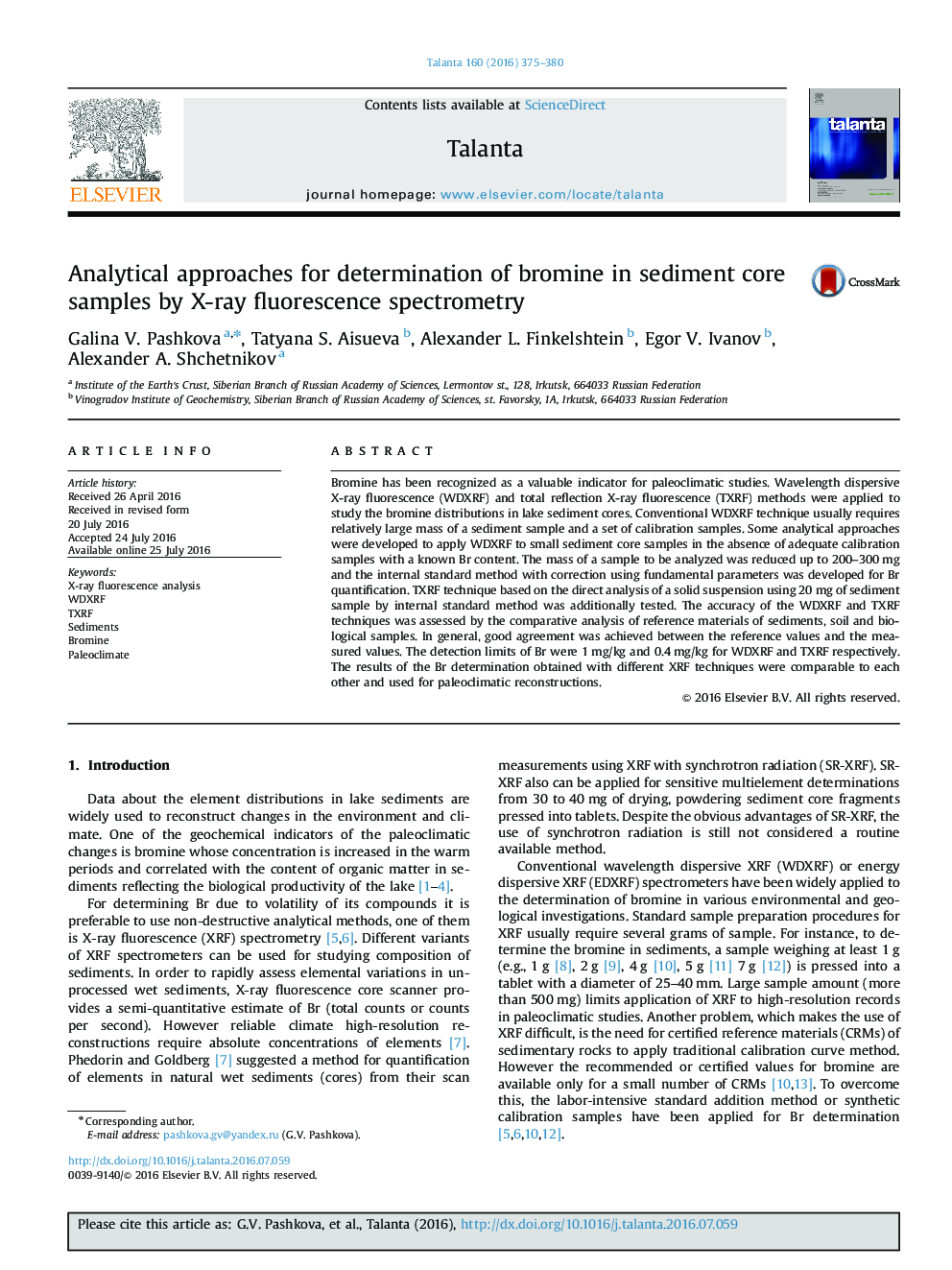| Article ID | Journal | Published Year | Pages | File Type |
|---|---|---|---|---|
| 1243271 | Talanta | 2016 | 6 Pages |
•WDXRF technique was developed without calibration samples with a known Br content.•The mass of a sample to be analyzed was reduced up to 200–300 mg.•TXRF technique was tested using 20 mg of sediment sample.•Good agreement between WDXRF and TXRF results was observed.•Depth profiles of Br concentrations in sediment cores were constructed.
Bromine has been recognized as a valuable indicator for paleoclimatic studies. Wavelength dispersive X-ray fluorescence (WDXRF) and total reflection X-ray fluorescence (TXRF) methods were applied to study the bromine distributions in lake sediment cores. Conventional WDXRF technique usually requires relatively large mass of a sediment sample and a set of calibration samples. Some analytical approaches were developed to apply WDXRF to small sediment core samples in the absence of adequate calibration samples with a known Br content. The mass of a sample to be analyzed was reduced up to 200–300 mg and the internal standard method with correction using fundamental parameters was developed for Br quantification. TXRF technique based on the direct analysis of a solid suspension using 20 mg of sediment sample by internal standard method was additionally tested. The accuracy of the WDXRF and TXRF techniques was assessed by the comparative analysis of reference materials of sediments, soil and biological samples. In general, good agreement was achieved between the reference values and the measured values. The detection limits of Br were 1 mg/kg and 0.4 mg/kg for WDXRF and TXRF respectively. The results of the Br determination obtained with different XRF techniques were comparable to each other and used for paleoclimatic reconstructions.
Graphical abstractFigure optionsDownload full-size imageDownload as PowerPoint slide
